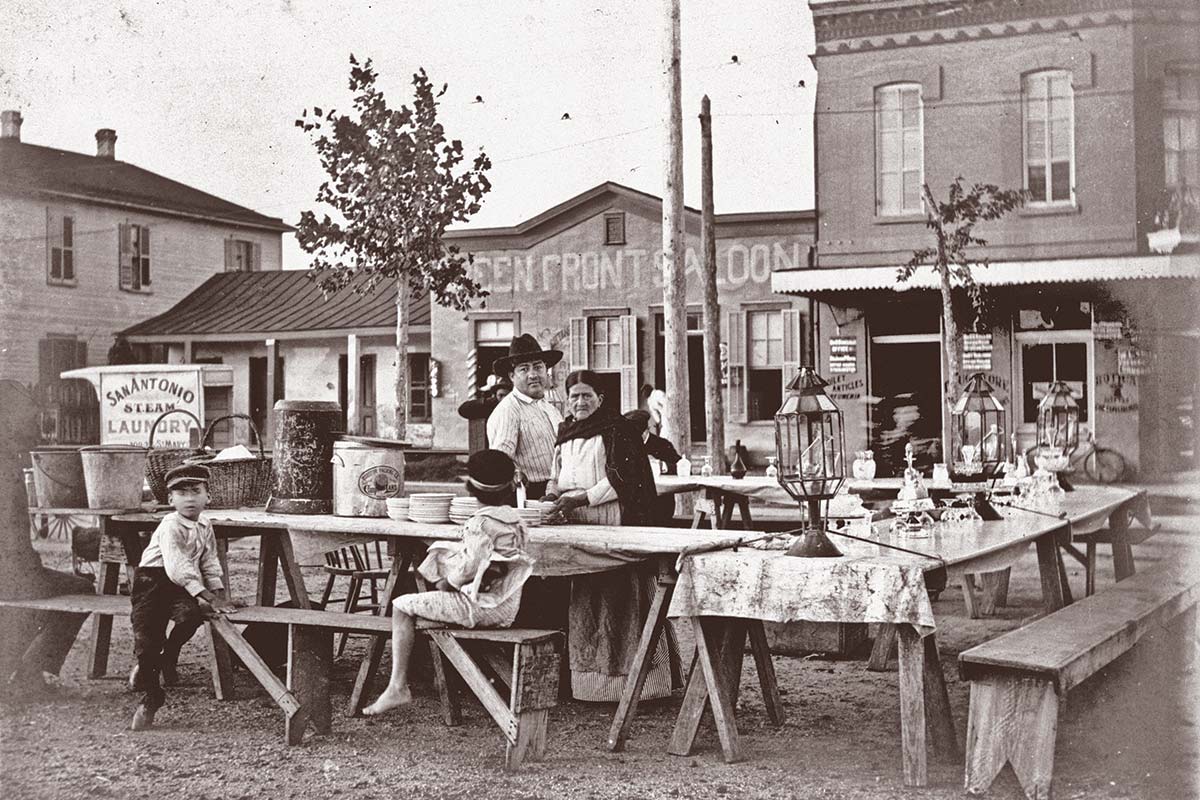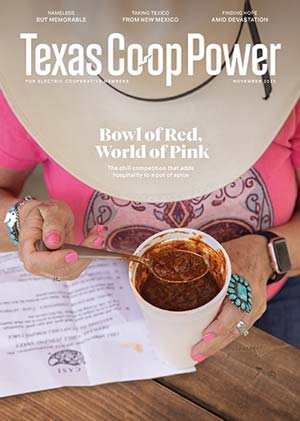Like many quintessentially American foods, chili (or more accurately chili con carne) was born from that unique amalgam of cultures found in the U.S. And like many foods rooted in home cooking, a precise origin is hard to track down.
Though some writers have suggested chili has an Aztec or New Mexican origin, Frank X. Tolbert’s A Bowl of Red, one of the definitive books on chili, opines that most historians agree it originated in San Antonio. A Bowl of Red, Joe E. Cooper’s With or Without Beans, and Robb Walsh’s The Chili Cookbook write that the dish was seldom found in Mexican restaurants or homes until the 20th century.
It was, however, found in Texas in the 1800s.
You had in San Antonio during that time the influx of Spanish culture along with the meat animals of the Old World—sheep, goats, pigs and above all, cattle—present in abundance by the beginning of the 1800s.
Tolbert, Cooper and Walsh have suggested that immigrants from the Canary Islands brought to San Antonio on the order of the Spanish king in the 1700s were the originators of chili. There is a line of evidence in the red mojo sauces that Canarian foods are known for, composed of ground chiles of varying degrees of hotness, cumin, garlic and other spices. These base sauces are remarkably similar to those used in most chili recipes.
Chili appeared most prominently in San Antonio in the 1880s when it became a market staple supplied by Tejana women who became known as chili queens. In the city’s open-air markets, these family cooks fed workers and visitors in what was becoming a major cattle center of the Southwest.
More cultural fusion spread chili across Texas. In 1894, Charles Gebhardt, a German immigrant who lived in New Braunfels, developed a method for turning dried chiles into a powder that could be sold to restaurants burgeoning in new railway towns. That meant a quick bowl of red could be prepared without the long cooking and processing required for the intact dried chile. His chili powder remains a staple.
In the 20th century, canned chili and chili powders powered the spread of the dish across the U.S. and beyond, setting the stage for the final (so far) evolution of the dish—the cook-off.
While the first chili cook-off may have taken place at the 1952 State Fair of Texas, the much publicized 1967 competition in Terlingua, which Tolbert helped organize, created the chili cook-off phenomenon.



